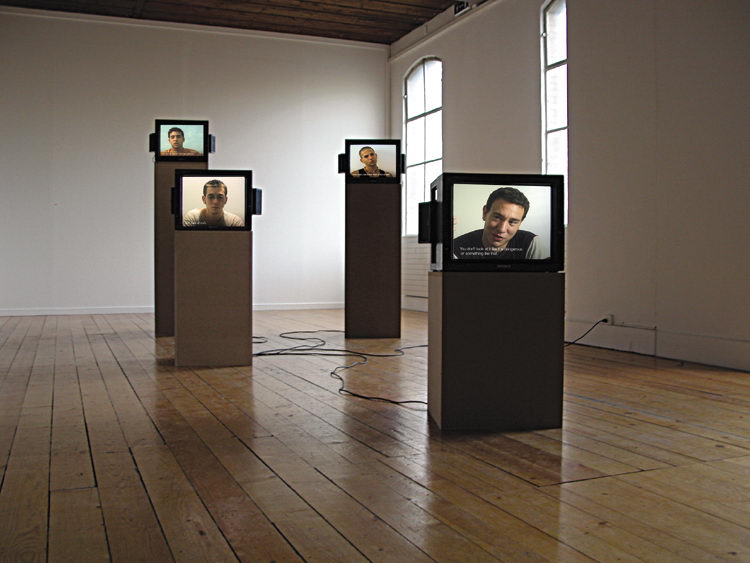And Europe Will Be Stunned
2007 - Film & Video (Film & Video)
Mary Koszmary (2007), one channel super 16 mm film transferred to video, color, sound, 10 min., 50 sec.; Mur I Wieza (2009), one channel RED transferred to Blue Ray DVD, color, sound, 15 min.; and Zamach (2011), one channel video and sound installation, RED transferred to HD, color, sound, 35 min.
Yael Bartana
Yael Bartana received great international attention for the trilogy series And Europe Will be Stunned (2007 – 2011). The series, which includes the films Mary Koszmary (Nightmare) (2007) , Mur i wieza (Wall and Tower) (2009), and Zamach (Assassination) (2011), centers on a young Polish politician’s call for the return of 3.3 million Jewish people who emigrated to Palestine. The films employ the same techniques of Leni Riefenstahl’s Nazi propaganda films, combining fact and fiction with the past and the present. Opening film Mary Koszmary (Nightmares) is set in the ruins of Warsaw’s Stadion Dziesieciolecia (Decennial Stadium) where the politician Slawomir Sierakowski is identified and summons the return of the Jewish people from today’s Israel. The second film Mur I Wieza (Wall and Tower) we see the establishment of loyal and idealistic followers of Sierakowski and the Jewish Renaissance Movement. They build a barbed wire wrapped tower-and-stockade-style kibbutz that was a settlement method established and developed by Zionists in Palestine from 1936–39. The final film Zamach (Assassination) sees the assassination of Sierakowski by an unknown assailant, which solidifies the Jewish Renaissance Movement. The three films bring together images of past and present Israeli and Polish identities and imagines a dangerous future.
The work of Yael Bartana investigates the imagination and imagery of identity and the politics of national memory and identity. Her interest in understanding and examining national statehood stems from being born in Israel, and being surrounded by the perpetual production of collective national identity. After completing her studies, Bartana undertook what she called ‘amateur anthropological’ research into ritual and myth making to take a critical perspective towards her own history and nationality. As a result of her politically charged practice that often deals with Jewish identity in Israel and abroad, she has garnered significant criticism, notably being labeled as anti-Zionist and a self-hating Jew. Despite this criticism, Bartana believes that, through her work as an artist, exploring both political statehood and religious and political diaspora, she is responsible for addressing these issues. Bartana believes that growing up in such a politically charged state requires artists to become either political artists, or escapists.
Colors:
Related works featuring themes of: » Israeli

© » KADIST
Oded Hirsch
2012Oded Hirsch’s video work Nothing New (2012) utilizes seemingly absurdist tropes to raise more trenchant questions about communal action and collective identity in modern day Israel...

© » KADIST
Elad Lassry
2013In his composition, Chocolate Bars, Eggs, Milk, Lassry’s subjects are mirrored in their surroundings (both figuratively, through the chocolate colored backdrop and the brown frame; and literally, in the milky white, polished surface of the table), as the artist plays with color, shape, and the conventions of representational art both within and outside of the photographic tradition...

© » KADIST
Elad Lassry
2013In establishing a deliberate distance between viewer and subject, Lassry raises questions about representation itself and how all portraits are, in effect, fully constructed objects that only gain meaning once we ascribe them with our own personal associations and emotions...

© » KADIST
Elad Lassry
2012The black-and-white photograph Men (055, 065) (2012) depicts two similarly built young men – young and slim, with dark tousled hair and a square jaw line – seated aside one another in identical outfits...




